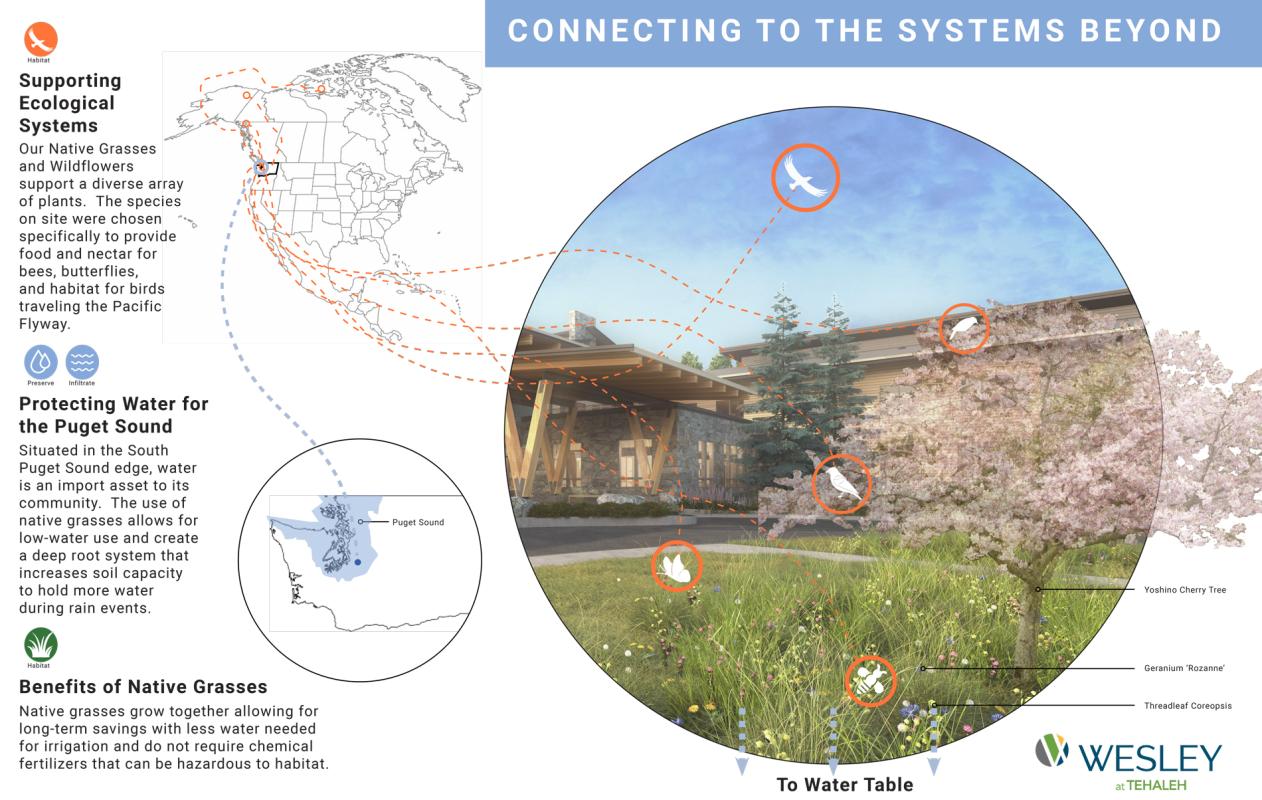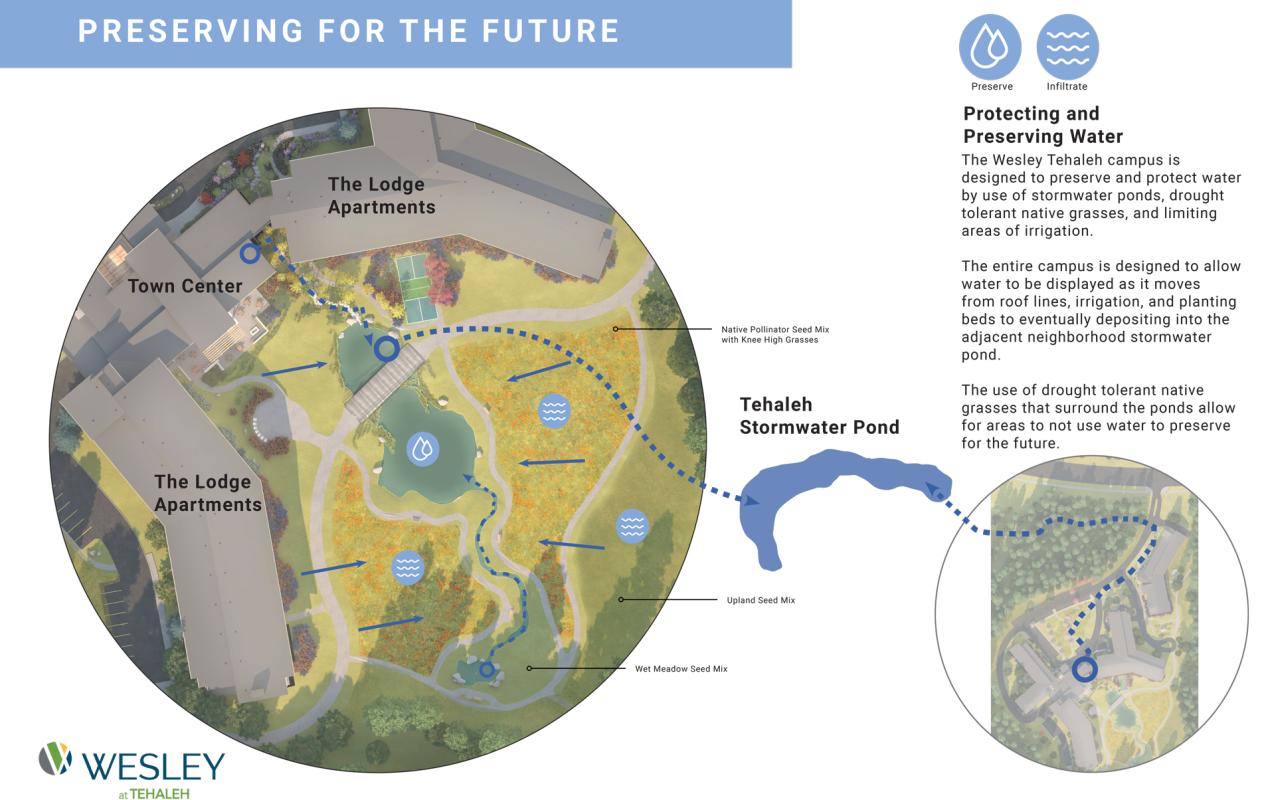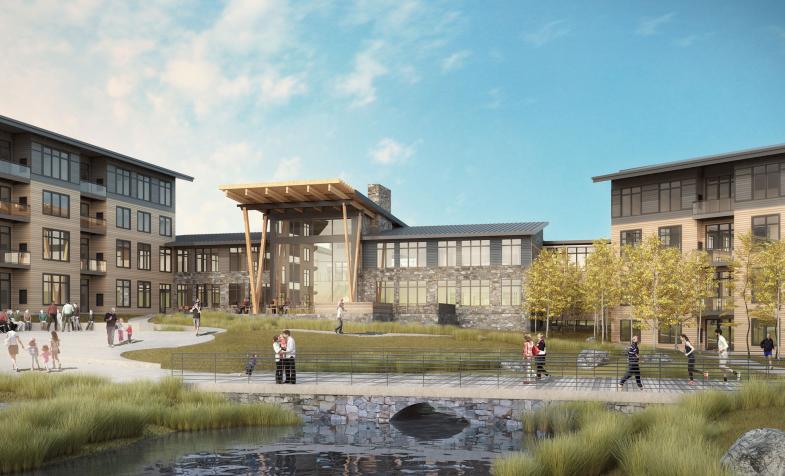Supporting Ecological Systems Through Native Landscaping
Supporting Ecological Systems Through Native Landscaping
Native landscaping and biophilic design has transformed Wesley at Tehaleh, a shared ministry with Presbyterian Homes into a nature-lover’s paradise. Beyond its connections to miles of scenic trails, this new senior living community in Bonney Lake, Washington utilizes a variety of sustainable landscaping techniques to support and protect the local ecological systems.
Benefits of Native Grasses
Cuningham landscape designers chose native grasses and wildflowers to support a diverse array of plants on the site. The species were chosen specifically to provide food and nectar for bees, butterflies, and habitat for birds traveling the Pacific Flyway.
On Wesley at Tehaleh's campus, native grasses grow together, meaning less water is required for irrigation and no chemical fertilizers that can be hazardous to the habitat are applied. Beyond sustainability, the reduced water usage also provides long-term cost savings!

Protecting and Preserving Water for the Puget Sound
Situated in the South Puget Sound edge, water is an import asset to the Bonney Lake community. As mentioned, designers' use of native grasses allows for low-water use and creates a deep root system that increases soil capacity to hold more water during rain events. The Wesley Tehaleh campus is also designed to preserve and protect water by use of stormwater ponds, drought-tolerant native grasses, and limited areas of irrigation.
The entire campus is designed to allow water to be displayed as it moves from roof lines, irrigation, and planting beds to eventually depositing into the adjacent neighborhood stormwater pond. The use of drought-tolerant native grasses that surround the ponds allow for areas to avoid becoming water-dependent, preserving the land for the future.

